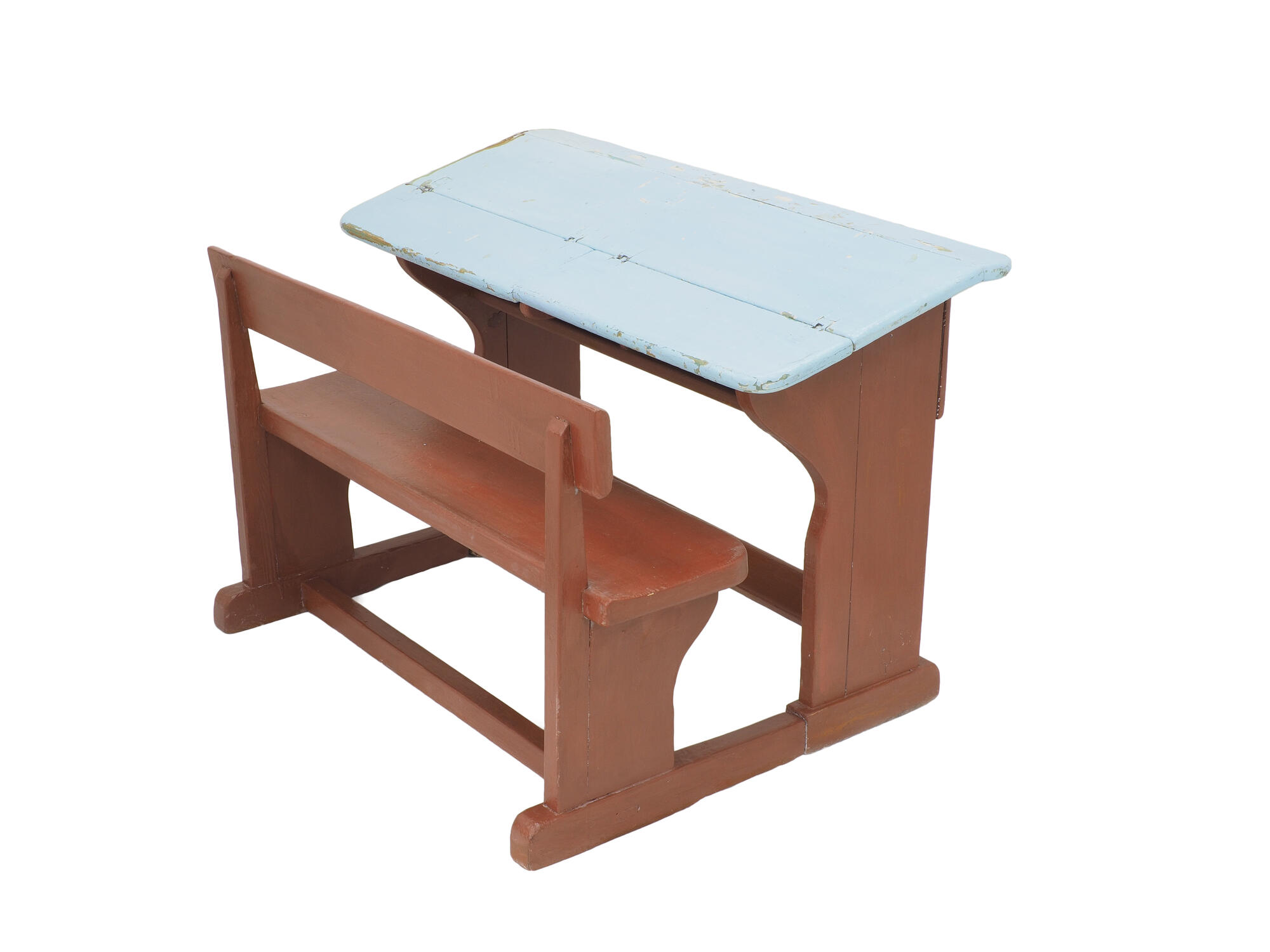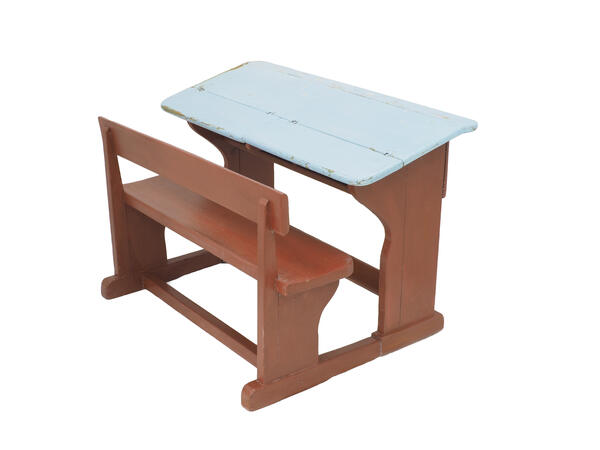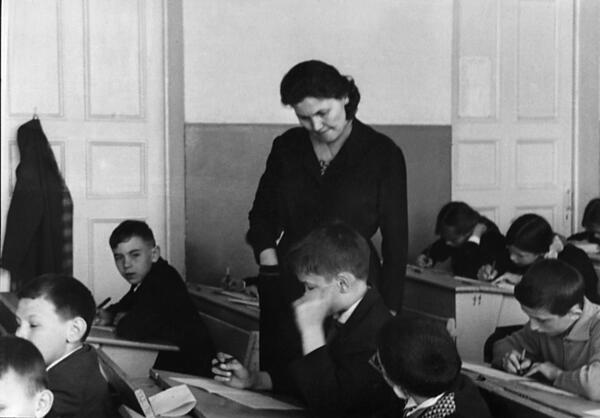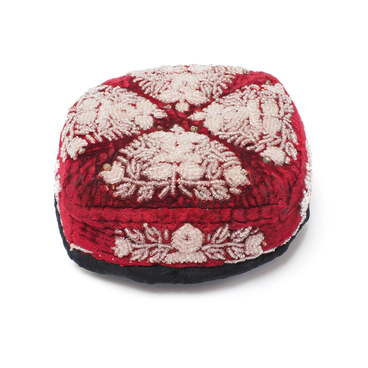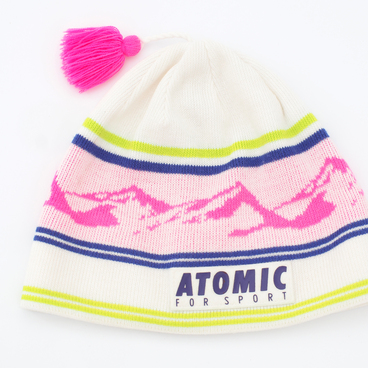The exhibition features a school desk from the 1960s that had been used in one of the Seversk schools. It consists of two parts: a desk with a special tilted worktop and a bench for two people.
In the second half of the 19th century, simple cheap desks and chairs were used in classroom. However, the scientists soon noticed that after a few academic years, students’ health had severely deteriorated: the health problems that were the first to happen were poor posture and eyesight problems.
One of the first people to notice it was the famous Russian-Swiss hygienist Friedrich (Fyodor) Erisman. He carried out the research and published his work “The Impact of Schools on the Origin of Myopia” at the age of 28. In his work, he made the connection between eyesight and posture deterioration and the fact that students do not sit in the right position while they are at school. In 1870, he suggested a new design of a school desk.
According to Erisman’s idea, the new school desk was supposed to have a tilted worktop: that allowed students to read any text at the right angle. It was comfortable to draw and write at such a desk — the student’s elbows rested on the worktop, and the student did not have to bend over the desk. Since Erisman had been treating eyesight problems for a long time, he was able to take into account the optimal distance between the student’s face and his or her notebook or textbook: it was about 30–40 centimeters.
Erisman’s desks were for one person, while all the previous desks had been for two people. The chairs were attached to the desk to ensure the optimal reading distance.
Erisman’s school desk was improved by Pyotr Korotkov — a student from St. Petersburg, who was exiled to a village in the Ural region for taking part in the revolutionary movement ‘Land and Liberty’. He made the school desks for two people again and made the worktop adjustable — that way the students could stand up and leave the desk comfortably. In addition, the school desk that was designed by Korotkov was a lot lighter than the previous heavy model — it was easier to move and readjust.
Since the students in village schools did not have lockers to put their things in, Korotkov suggested screwing little hooks to the desks for hanging backpacks and making a compartment under the worktop for keeping textbooks. In 1887, Korotkov was awarded a silver medal and a diploma at the Ural-Siberian Industrial exhibition for this invention.
In the second half of the 19th century, simple cheap desks and chairs were used in classroom. However, the scientists soon noticed that after a few academic years, students’ health had severely deteriorated: the health problems that were the first to happen were poor posture and eyesight problems.
One of the first people to notice it was the famous Russian-Swiss hygienist Friedrich (Fyodor) Erisman. He carried out the research and published his work “The Impact of Schools on the Origin of Myopia” at the age of 28. In his work, he made the connection between eyesight and posture deterioration and the fact that students do not sit in the right position while they are at school. In 1870, he suggested a new design of a school desk.
According to Erisman’s idea, the new school desk was supposed to have a tilted worktop: that allowed students to read any text at the right angle. It was comfortable to draw and write at such a desk — the student’s elbows rested on the worktop, and the student did not have to bend over the desk. Since Erisman had been treating eyesight problems for a long time, he was able to take into account the optimal distance between the student’s face and his or her notebook or textbook: it was about 30–40 centimeters.
Erisman’s desks were for one person, while all the previous desks had been for two people. The chairs were attached to the desk to ensure the optimal reading distance.
Erisman’s school desk was improved by Pyotr Korotkov — a student from St. Petersburg, who was exiled to a village in the Ural region for taking part in the revolutionary movement ‘Land and Liberty’. He made the school desks for two people again and made the worktop adjustable — that way the students could stand up and leave the desk comfortably. In addition, the school desk that was designed by Korotkov was a lot lighter than the previous heavy model — it was easier to move and readjust.
Since the students in village schools did not have lockers to put their things in, Korotkov suggested screwing little hooks to the desks for hanging backpacks and making a compartment under the worktop for keeping textbooks. In 1887, Korotkov was awarded a silver medal and a diploma at the Ural-Siberian Industrial exhibition for this invention.
